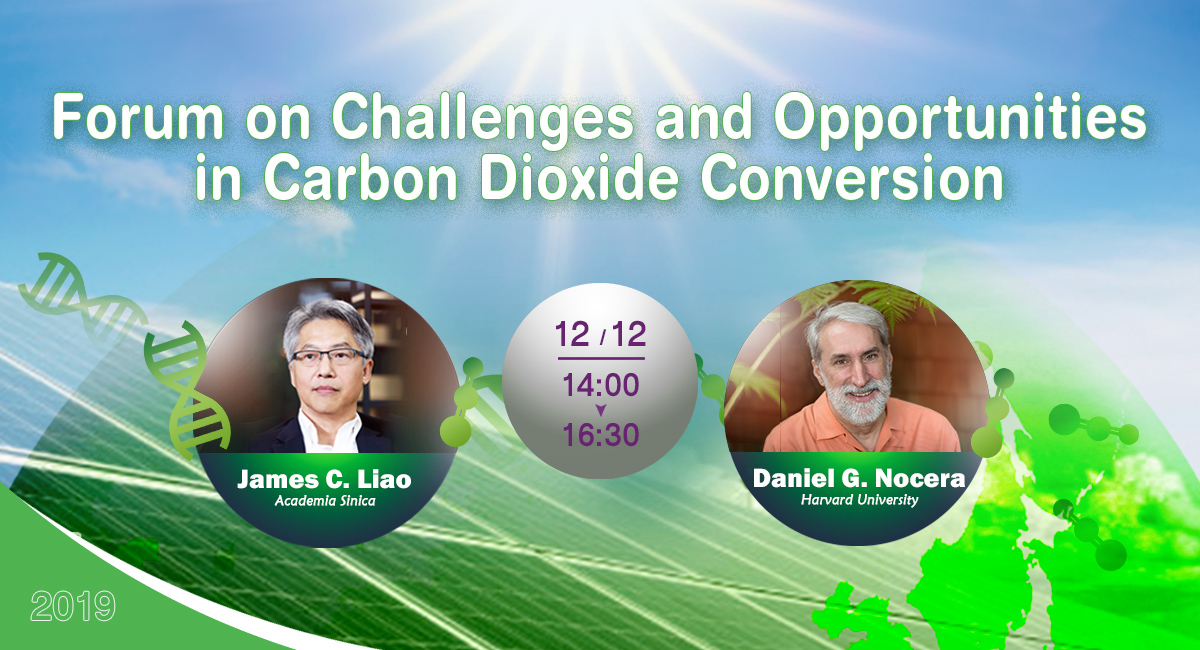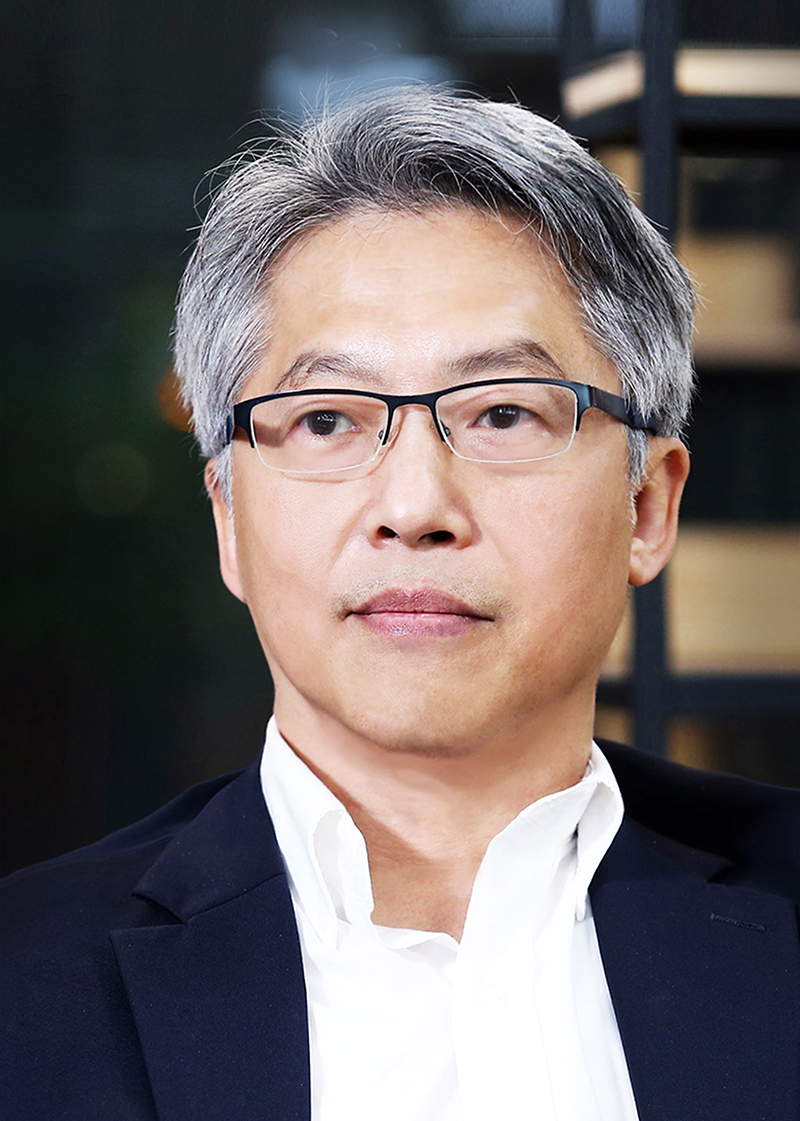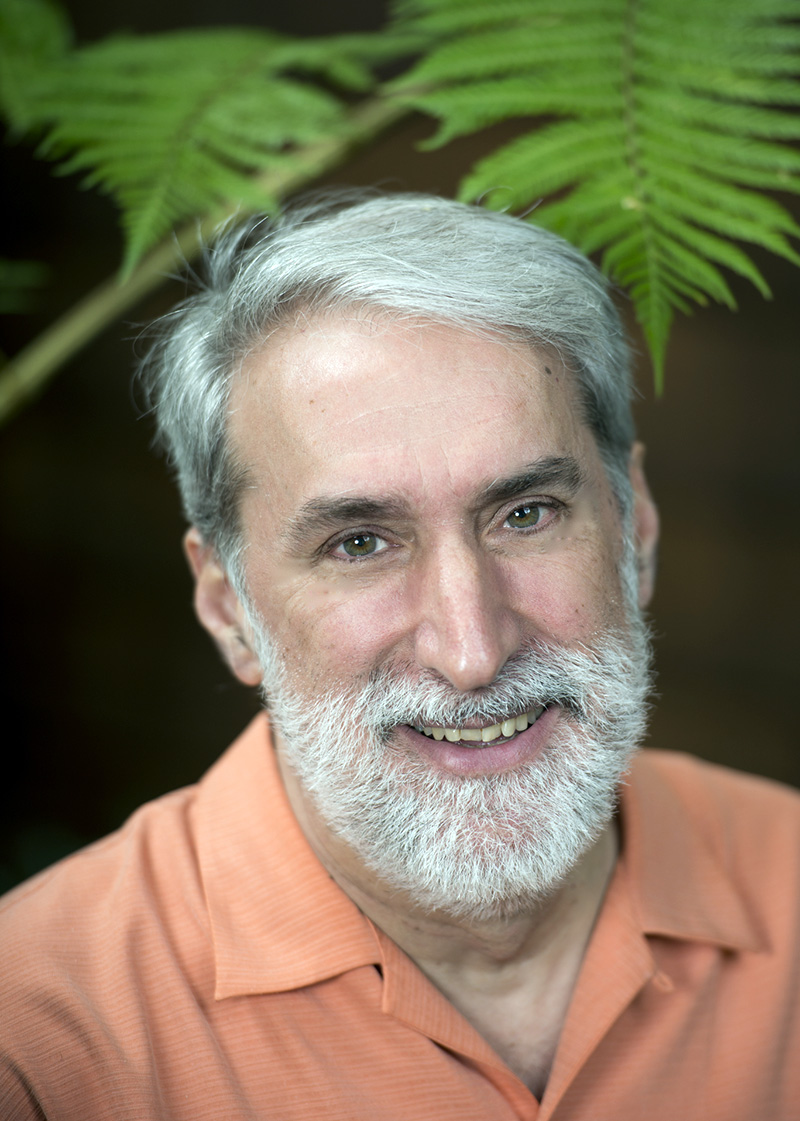
Program
| 14:00-14:05 | Opening remarks by President James C. Liao |
|---|---|
| 14:05-14:45 | Professor Daniel G. Nocera (Harvard University) Topic: Carbon Dioxide Conversion at High Solar Energy Conversion Efficiencies Moderator: Prof. I-Jy Chang |
| 14:45-15:25 | President James C. Liao (Academia Sinica) Topic: Pathways to Carbon Fixation and Conversion Moderator: Dr. Steve Sheng-Fa Yu |
| 15:25-15:40 | Coffee Break |
| 15:40-16:30 | Round table discussion on Challenges and Opportunities in Carbon Dioxide Conversion Prof. Daniel G. Nocera, President James C. Liao, Prof. Wen-Feng Liaw, Prof. Li-Chyong Chen, Prof. Kuo-Wei Huang Moderator: Dr. Chen-Hsiung Hung, Dr. Ming-Hsi Chiang |
| 16:30- | Group photo |
James C. Liao
James C. Liao
Dr. James C. Liao, currently serves as President of Academia Sinica, Taiwan. He is an elected Member of the US National Academy of Engineering, US National Academy of Sciences, US National Academy of Inventors, and Academician of Academia Sinica in Taiwan. His research has focused on metabolism, including its biochemistry, regulation and redesign. Currently, his projects include design and engineering biochemical pathways for CO2 fixation and production of fuels and chemicals. Dr. Liao received his BS degree from National Taiwan University and PhD from University of Wisconsin-Madison. After working as a research scientist at Eastman Kodak Company, Rochester, NY, he started his academic career at Texas A&M University in 1990 and moved to UCLA in 1997. He received numerous awards and recognitions, including the US EPA Presidential Green Chemistry Challenge Award, the White House “Champion of Change” for innovations in renewable energy, the ENI Renewable Energy Prize bestowed by the President of Italy, and the US National Academy of Sciences Award for the Industrial Application of Science.
Pathways to Carbon Fixation and Conversion
Daniel G. Nocera
Daniel G. Nocera
Dr. Nocera is the Patterson Rockwood Professor of Energy at Harvard University. His group has pioneered studies of the basic mechanisms of energy conversion in biology and chemistry with a focus on multi-electron transformations and the coupling of protons to electron transfer (i.e., proton-coupled electron transfer). His group accomplished a solar fuels process that captures many of the elements of photosynthesis; he translated this science to produce the artificial leaf, which was named by Time magazine as Innovation of the Year for 2011. He has also demonstrated a path to liquid fuels using a bio-engineered bacterium to efficiently convert carbon dioxide, along with hydrogen produced from the artificial leaf, into biomass and fusel alcohols. In 2008, he founded Sun Catalytic to further develop and commercialize these and other technologies; in August 2014, Lockheed Martin purchased the assets of Sun Catalytix, and now Sun Catalytix technology is being fast-tracked to commercialization under the new venture, Lockheed Martin Advanced Energy Storage, LLC. Dr. Nocera began his career at Michigan State University, where he was a University Distinguished Professor and then was on the faculty of MIT where he was the Henry Dreyfus Professor of Energy. He earned his B.S. degree at Rutgers University and his Ph.D. at Caltech.
Carbon Dioxide Conversion at High Solar Energy Conversion Efficiencies
Daniel G. Nocera
Patterson Rockwood Professor of Energy Harvard University
Hybrid biological | inorganic (HBI) constructs have been created to use sunlight, air and water (as the only starting materials) to accomplish carbon and nitrogen fixation, thus enabling distributed and renewable fuels and crop production. The carbon and nitrogen fixation cycles begin with the artificial leaf, which was invented to accomplish the solar fuels process of natural photosynthesis – the splitting of water to hydrogen and oxygen using sunlight – under ambient conditions. The creation of self-healing catalysts for: (1) the artificial leaf allows for the facile interfacing of water splitting catalysis to materials such as silicon and (2) the bionic leaf allows for the facile interfacing of water splitting catalysis to bioorganisms. For the latter, using the tools of synthetic biology, a carbon-fixing bacterium has been developed to convert carbon dioxide from air, along with the hydrogen produced from the catalysts of the artificial leaf, into biomass and liquid fuels, thus closing an entire artificial photosynthetic cycle. The HBI, called the bionic leaf, operates at unprecedented solar-to-biomass (10.7%) and solar-to-liquid fuels (6.2%) yields, greatly exceeding the 1% yield of natural photosynthesis. Extending this approach, a renewable and distributed synthesis of ammonia (and fertilizer) at ambient conditions has been created by coupling solar-based water splitting to a carbon and nitrogen fixing bioorganism. Nitrogen is fixed by using the hydrogen produced from water splitting to power a nitrogenase cycle within the bioorganism. Nitrogen fixation to ammonia proceeds at high turnover per cell and operates without the need for a carbon feedstock (other than the CO2 provided from air). Increased crop yields of 300% have been achieved. Because carbon and nitrogen are taken from the air and installed in the soil, this approach enables sustainable crop production with a carbon negative budget. The science that will be presented will show that using only sunlight, air and water, a distributed system may be established to produce fuel and food within sustainable cycles for the biogenic elements C, N and P. Such science will be particularly useful to the poor of the world, where large infrastructures for fuel and food production are not tenable.


